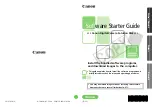
1 An Overview of TACL
107365 Tandem Computers Incorporated
1–1
The Tandem Advanced Command Language (TACL) is the standard command
interface to the Tandem NonStop kernel. In addition to providing full command
interpreter facilities, TACL is a high-level programming language.
As a programming language, the TACL product is most often used for managing
systems and processes. You can, for example, use TACL to:
Automate system startup and shutdown procedures.
Automate subsystem startup and shutdown procedures; for example, you can use
TACL statements to initialize Pathway, the TMF subsystem, Transfer, and other
subsystems.
Run utilities and issue commands
−
either with a fixed set of commands or a
flexible set that you can tailor at run time.
Create a customized environment that simplifies commonly performed tasks for
users.
Control subsystem operation using the Subsystem Programmatic Interface (SPI).
Communicate with the Event Management Service (EMS) and generate EMS
messages.
The TACL language consists of commands, built-in functions, and built-in variables.
Commands are typically used for interactive work. Built-in functions are typically
used for programmatic work. Built-in variables store environmental information; you
can set and retrieve their values.
Procedural constructs such as flow control statements are provided as part of the set of
built-in functions. In addition, TACL provides powerful text manipulation functions
that process output and results from processes.
TACL is extensible; all of the commands supplied by Tandem are implemented as
TACL programs. You can add functions as necessary.
In addition, NetBatch requires the use of TACL.
The following paragraphs describe programming style and the use of examples in this
manual.
Running the Examples
in This Manual
Before running the examples in this manual, set the built-in variable #INFORMAT to
TACL, which enables recognition and processing of the TACL special characters ([ and
], for example); without this step, TACL does not recognize metacharacters as special
characters. The function call is:
11> #SET #INFORMAT TACL
In addition, set the built-in variable #PMSEARCHLIST to include (at least)
$SYSTEM.SYSTEM and the keyword #DEFAULTS, which enable the use of implied
RUN commands. An example is:
12> #SET #PMSEARCHLIST [#DEFAULTS] $SYSTEM.SYSTEM
















































